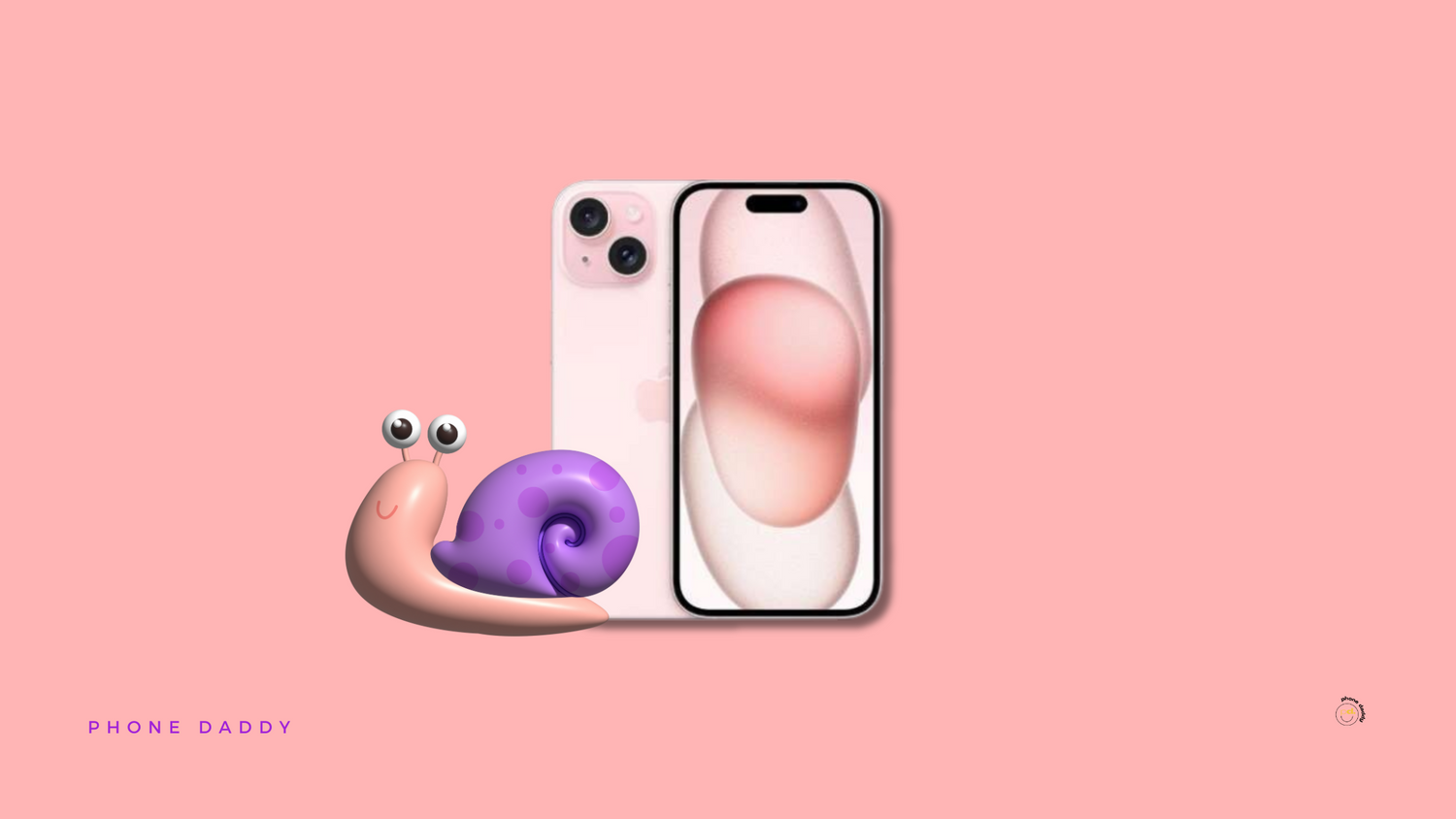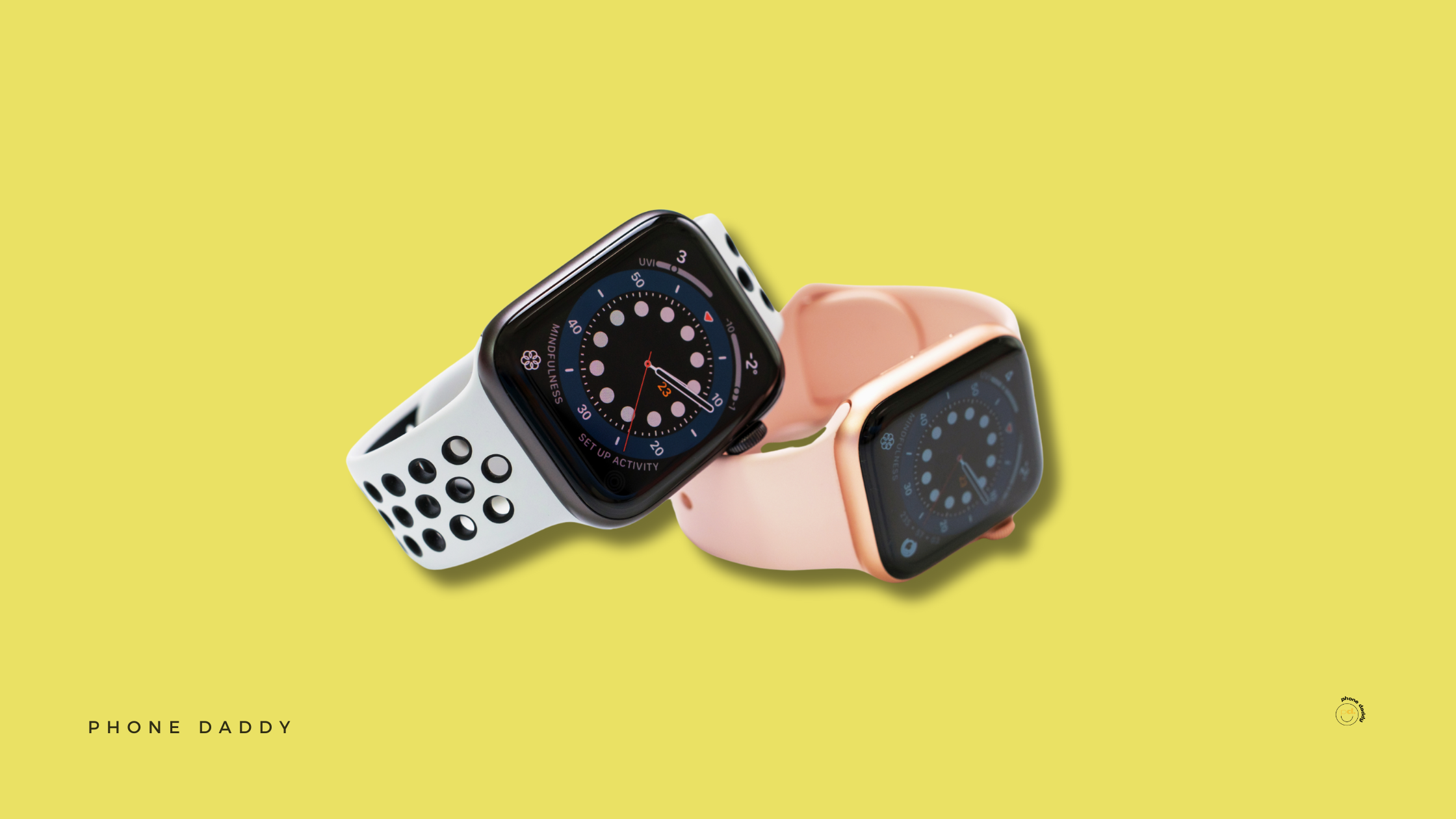- Regularly clear history and cache, remove unused widgets, and delete old photos and apps to free up storage space and improve processing power.
- Ensure you have the latest iOS version and app updates installed for optimal performance and bug fixes.
- Close background apps, turn off Low Power Mode for full processing power, and disable Background App Refresh for non-essential apps to conserve resources.
Is your brand-new iPhone 15 feeling sluggish lately? Apps taking forever to load? Animations stuttering? Slowdowns are a common occurrence with any phone, but you can try some easy fixes if your iPhone 15 is very laggy. In this blog post, we'll explore 18 quick troubleshooting tips to get your iPhone 15 back up to speed.
Why Is My iPhone 15 Running Slow?
There are several reasons why your iPhone 15 is getting very slow. Here are some of the most common culprits:
- 💾 Lack of Storage Space: iPhones slow down significantly when storage gets full. This is because the phone needs free space to temporarily store files and data while running processes.
- 📱 Outdated iOS: Older versions of iOS might not be optimized for the latest iPhone hardware, leading to slowdowns.
- 🔄 Background Apps: Even when you close an app, it might still be running in the background, consuming resources and slowing down your phone.
- 📲 Too Many Apps: Even unused apps can contribute to slowdowns by draining battery and running background processes.
- 🔧 Corrupted Settings or Software: Sometimes corrupted settings or software bugs can cause performance issues.
- 🛠️ Hardware Issues: While less likely with a brand new iPhone 15, a malfunctioning hardware component could also be to blame.
18 Quick Ways to Fix iPhone 15 Performance Problems
Below, we’ve shared 18 solutions to get your iPhone 15 running smoothly again, from simple restarts to storage management techniques. So, grab your iPhone, follow along, and get ready to experience the lightning-fast performance your iPhone 15 was designed for!
1. Clear History and Caches
There are two main ways to clear history and caches on your iPhone 15:
a. Clear Safari History and Website Data
This will remove browsing history, cookies, and cached website data. This can help improve your iPhone's performance and free up storage space.
- Open the Settings app on your iPhone 15.
- Scroll down and tap on Safari.
- Tap on Clear History and Website Data.
- A pop-up will appear asking you to confirm. Tap Clear History and Data to confirm.
b. Clear App Cache (individual apps)
Unlike Safari, there is no direct way to clear the cache of individual apps on iPhone. However, you can try these methods:
- Offload App: This will delete the app and its data from your device, but keep the app icon. You can then reinstall the app from the App Store to get a fresh start. This will also remove any app-specific data you may want to keep.
- Reinstall App: This will completely remove the app and all its data from your device. You will need to download and reinstall the app from the App Store.
2. Remove Useless Widgets
Those little boxes on your home screen that show info like weather or news are called widgets. While they can be handy, unused widgets can actually slow down your phone. They use up resources by constantly refreshing in the background. Removing useless widgets will free up resources and give your iPhone a little performance boost.
Here's how to remove widgets from your iPhone 15 Home Screen:
- Long press on any empty space on your Home Screen until all the app icons start jiggling.
- Locate the widget you want to remove.
- Tap the small minus sign (–) in the top left corner of the widget.
- Alternatively, hold the widget and tap Remove Widget from the pop-up menu.
- A confirmation pop-up might appear. Tap Remove to confirm.
- Tap Done in the top right corner to exit the wiggle mode.
3. Update Apps and iOS
Apple regularly releases iOS updates that include performance improvements and bug fixes. Just like iOS, app developers frequently release updates that can improve performance. Make sure your iPhone 15 is running the latest version of iOS and all apps are up to date.
Here’s how to manually update apps on your iPhone 15:
- Open the App Store app on your iPhone 15.
- Tap on your profile picture at the top right corner of the screen.
- You'll see a list of apps with available updates. Scroll down to see them.
- Here you have two options:
- Tap Update next to an individual app to update only that specific app.
- Tap Update All at the top of all apps to update them at once.
You can also enable automatic updates by following these steps:
- Open the Settings app on your iPhone 15.
- Scroll down and tap App Store.
- Toggle the switch next to App Updates to enable automatic app updates.
Now, update iOS on your iPhone 15:
- Open the Settings app on your iPhone 15.
- Tap on General.
- Tap on Software Update.
- Your iPhone will check for available iOS updates. If an update is available, you will see the details on the screen.
- Tap Download and Install to download and install the update. Your iPhone might need to restart during the update process.
4. Close Background Apps
Keeping a bunch of apps open in the background can consume memory and slow down your phone. To close background apps on iPhone 15, swipe up from the bottom of the screen (like you're going to open Control Center) and pause halfway. Swipe up on individual app previews to close them, or swipe all the way up to close them all.
5. Turn Off Unwanted Notifications
While a single notification uses minimal resources, a constant stream of notifications, especially from complex apps with rich content, can cause a slight drain on your iPhone's processing power and memory. Here’s how to turn off notifications for individual apps:
- Open the Settings app on your iPhone 15.
- Scroll down and tap on Notifications.
- You'll see a list of all your apps. Tap on the app for which you want to turn off notifications.
- Toggle the switch next to Allow Notifications to off. This will disable all notifications for that app.
6. Enable Reduce Motion
Motion effects, like the parallax effect on your home screen, can add a nice visual touch, but they can also slow down your phone if it's struggling. To reduce motion effects, go to Settings > Accessibility > Motion and toggle off the Reduce Motion option.
7. Turn Off the Background App Refresh
Background App Refresh allows apps to fetch new data even when they're not open. While useful for some apps, it can drain resources on others. Go to Settings > General > Background App Refresh and turn it off for apps you don't need to constantly refresh in the background.
8. Force Restart Your iPhone
Sometimes a simple restart can work wonders. To force restart an iPhone 15, quickly press and release the Volume Up button, then the Volume Down button, and finally hold the Side button until you see the Apple logo. This clears out any temporary glitches that might be causing slowdowns.
9. Clean Up Your iPhone Storage
Your iPhone 15 might be running slow because it's overloaded with data. Head over to Settings > General > iPhone Storage to see how much space you're using. You can free up space by offloading unused apps (the app data is deleted, but you can download it again later), deleting old photos and videos, or moving large files to iCloud storage.
10. Delete Problematic or Unnecessary Apps
There are probably apps on your iPhone 15 that you haven't used in ages. Not only are they taking up storage space, but they could also be running background processes that slow down your phone. Take some time to go through your apps and delete any you don't use anymore.
11. Turn Off Low Power Mode
While Low Power Mode saves battery life by limiting background activity, it can also throttle performance slightly. Disabling it can restore full processing power. Here’s how to turn off low power mode on your iPhone 15:
- Open the Settings app.
- Tap on Battery.
- You'll see a toggle switch next to Low Power Mode. Tap the switch to turn it off. When Low Power Mode is off, the switch will be gray.
12. Turn Off Siri Suggestions & Siri Look Up
Siri Suggestions & Siri Look Up can consume resources as they constantly scan your activity and content to provide suggestions. Turning them off can free up some processing power. Here’s how:
- Open Settings.
- Tap on Siri & Search.
- Under the Before Searching section, toggle off Show Suggestions. This disables suggestions in Spotlight Search.
- In the Content From Apple section, toggle off all the options you don't want suggestions for.
Siri Look Up uses web searches to find information related to what you're doing on your device. There isn't a direct on/off switch, but you can turn off Siri Suggestions (as explained above) which will limit Siri Look Up functionality significantly.
13. Disable Automatic Downloads
Automatic downloads for app updates, music, or other content can happen in the background without your knowledge, potentially using resources and slowing things down. Disabling them allows you to control when downloads occur. Here’s how to disable automatic downloads on iPhone:
- Go to Settings.
- Then tap App Store.
- Toggle off the switches for App Updates and Automatic Downloads depending on what you want to control.
14. Disable Resource-Hogging Features
Some features like visual effects (motion wallpapers, animations, and live photos) or background app refresh for specific apps can be resource-intensive. Disabling them can improve performance, especially on older iPhones.
To help your phone run smoother, try these steps:
- Go to Settings > Wallpaper and pick a regular picture as your wallpaper.
- Go to Settings > Camera and turn off Live Photos.
15. Enable Reduce Transparency
Transparency effects on certain menus and apps can be visually appealing but require more processing power. Enabling Reduce Transparency simplifies the visuals and can improve performance. Here’s how to enable reduce transparency on iPhone 15:
- Open Settings.
- Tap on Accessibility.
- Go to Display & Text Size.
- Toggle the switch on for Reduce Transparency.
16. Disable Location Services
Location services are useful for many apps, but they can also drain the battery and potentially slow down performance. Disabling them for non-essential apps can help. Here’s how to disable location services on iPhone 15:
- Open the Settings app on your iPhone 15.
- Tap on Privacy & Security.
- Find and tap Location Services.
- You'll see a toggle switch at the top for Location Services. Tap the switch to turn it off.
17. Factory Reset Your iPhone (Not Recommended)
This should be a last resort, as it erases all your data and settings. While it can resolve software glitches that might be causing slowdowns, it's a time-consuming process and requires data backups.
18. Contact Apple Support (Hardware Issue)
If none of the above solutions work, there might be a hardware issue with your iPhone 15. Apple Support can help diagnose the problem and suggest repair options.
Final Thoughts
By following these quick fixes, you've armed yourself with tricks to keep your iPhone 15 running smoothly. Remember, a little maintenance goes a long way! For long-term performance, make it a habit to clear history and cache every few weeks, review and remove unnecessary widgets monthly, and update your iOS and apps whenever new versions are available. If you ever notice your iPhone 15 feeling sluggish again, revisit this guide and try a few more fixes.



